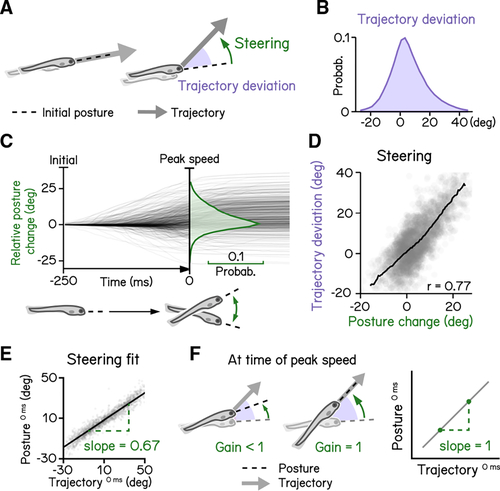Figure 4.
- ID
- ZDB-FIG-231024-4
- Publication
- Zhu et al., 2023 - SAMPL is a high-throughput solution to study unconstrained vertical behavior in small animals
- Other Figures
- All Figure Page
- Back to All Figure Page
|
Larval vertical navigation is led by steering toward trajectory (A) Schematic illustration of two climbing mechanics: (1) a larva may generate a thrust (arrow) toward the pointing direction (dashed line) at the initial of a bout (left), and (2) a larva can steer (green arrow) toward an eccentric angle before the thrust (right). The offset between trust angle and the direction the larva point toward at bout initial is termed trajectory deviation (purple). (B) Distribution of trajectory deviation. (C) Changes of pitch angles relative to initial pitch plotted as a function of time(dark lines) overlaid with distribution of pitch change at time of peak speed (green). (D) Trajectory deviation (purple) plotted as a function of posture changes from bout initial to time of the peak speed (green). Black line indicates binned average values. Positive correlation between trajectory deviation and posture change demonstrates that larvae steer toward the trajectory of the bout. (E) To measure the gain of steering compared with trajectory deviation, pitch angles at time of the peak speed are plotted as a function of trajectory. Steering gain is determined as the slope of the fitted line (Pearson’s r = 0.96). (F) Schematic illustrations demonstrating how steering gain associates steering (green arrows) with trajectory deviation (purple). For all panels, n = 121,979 bouts from 537 fish over 27 repeats. See also |

